Crypto Freedom
An Introduction To Cryptocurrency For The Newcomer
CRYPTOCURRENCY INTRODUCTION
If You Are New To Cryptocurrency – Or Experienced, The Following Will Help To Get You Up To Speed
The Average Person Still Doesn’t Understand What The Future Holds

Cryptocurrency Explained
The Average Person Still Doesn’t Understand What The Future Holds
Hopefully, this article will go a long way to bring the reader up to speed on the current status of Cryptocurrency, however, the information is as of 2019. We will be adding real-time info as time passes.
BROUGHT TO YOU BY:
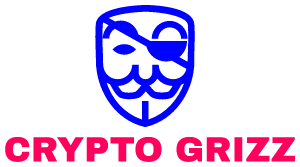
Check Out Our Crypto Privacy Site: CryptoGrizz.com
Check Out Our Crypto Trading Site: CryptoGrizzTrader
How do CryptoAssets and Virtual Currencies Work? [2019 Overview]

The idea of cryptocurrencies has been around for a long time. Developers and coders have been seeking the perfect way to implement cryptography into a digital asset since the birth of the internet. The idea is to use cryptography to secure all transactions of the specific digital asset, as well as control the creation of that same asset through the same means.
First descriptions of a functional Cryptocurrency appeared around 1998, and were written by a person named Wei Dai. They described an anonymous digital currency titled “b-money.” Not long after, another developer by the name of Nick Szabo created what they call “Bit Gold,” the first cryptocurrency that used a proof of work function to validate and authenticate each transaction. All following currencies would use this proof of work concept in their code.
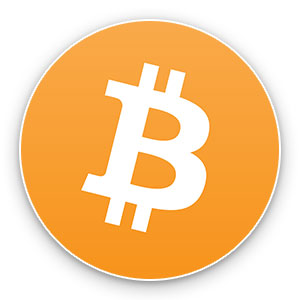
Bitcoin
It wasn’t until 2009 that the first, decentralized cryptocurrency was launched and developed by none other than the famously reclusive Satoshi Nakamoto. Simply put, his digital form of currency was a work of art. It used cryptography and proof of work functions just as described by Nick Szabo. The whole code was released as open source for anyone to see and work on in 2009.
Bitcoin was the first currency of its kind. Each transaction between Bitcoin users was designed in a peer-to-peer method, meaning that all transactions were direct and without an intermediary. Each transaction is then authenticated and verified multiple times by other computers on the network. The more time passes since the occurrence of the transaction, the more validated it becomes. It is estimated that once a transaction has been verified 6 times, its validity is equivalent to a 6 month old credit card transaction.
Because Bitcoin has no repository or single administrator, and since all of the code used for its own functionally is open source, it is considered to be a truly decentralized system. The Bitcoin community itself makes decisions on what needs to be implemented in the code and what needs to be rectified. In order for Bitcoin to work correctly, each version of the Bitcoin Core software has to be compatible with each other, so everyone has to make the decision regarding all updates to the software, otherwise those who do not agree with the update will not be able to be a part of the Bitcoin network. Since the computing power of the users on the network is needed to keep Bitcoin alive, it is in the developers’ interest to keep everyone happy with the decision that they make. Furthermore, since all of the code is open source, it is practically impossible to shift any power over Bitcoin to a single user or a group of users because this part of the code would be identified quickly and brought to light, making most of the users very unhappy with an attempt to centralize the currency.
Satoshi Nakamoto has claimed to be a man living in Japan who was born on the 5th April, 1975. However, Nakamoto has always been somewhat secretive about his identity. In fact, it is unclear to this day whether they are a real person or a pseudonym. Many people speculate that Nakamoto is actually a group of developers who worked together to jump start the Bitcoin project and then disbanded when it took off. Nakamoto worked on the Bitcoin system up until December of 2010, at which point he handed over the network alert key and the source code repository to Gavin Andresen while distributing some of the key domains linked to Bitcoin amongst notable members of the Bitcoin community. Afterwards, his involvement with the project ceased.
The father of Bitcoin was able to not only code an exceptionally well built system, but also found clever ways to ensure his work was validated and not misunderstood for some sort of a scheme by others. For example, Nakamoto left a message inside this first manually altered code. When the first block of Bitcoin was mined, it read ‘The Times 03/Jan/2009 Chancellor on brink of second bailout for banks.’ This quote is the headline for The Times newspaper which was published on January 3rd, 2009. The clever use of this simple message is overlooked by many, and it dictates that the first block was mined no earlier than January 3rd, 2009. This is extremely important because the whole Bitcoin system is designed to run and validate itself from the previously mined blocks, so giving a valid timestamp which can be authenticated by a simple headline title to the first block was genius. Afterwards, all blocks used the previous block for reference.
It should also be noted that the timestamps on the subsequent blocks indicate that Nakamoto did not mine the first blocks in an attempt to keep them for himself and make profit this way. Yes, Nakamoto was awarded Bitcoins as he was the first and a sole miner for some time, but this continued only for about 10 days after the launch of the Bitcoin network. The only thing that Nakamoto used his Bitcoins for was a few test transactions. Starting from around mid-January of 2009, those Bitcoins were left unspent. Anyone can check the public log of Nakamoto’s Bitcoin address, which shows roughly 1 million Bitcoins. This amount of Bitcoins is roughly equal to about $2.8 billion USD. Needless to say, Nakamoto’s invention was a success.
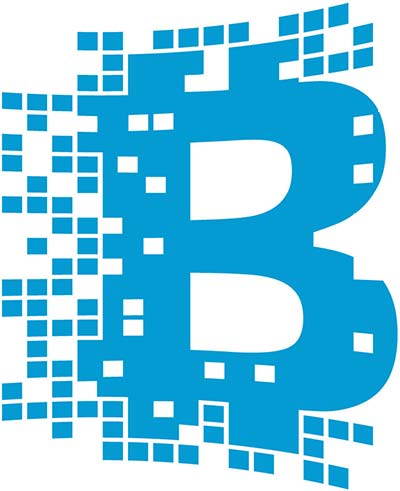
Blockchain
This is all fun and peachy, but how exactly are all the transactions made by Bitcoin users kept in check? Well, luckily Satoshi Nakamoto thought of a rather ingenious way to handle transactions and making them all transparent at the same time.
Simply put, whenever a user sends a certain amount of Bitcoins to another user, a third user verifies this transaction and publicly notates it in a ledger which is accessible by anyone. This ledger is called the “blockchain.” As time goes on, more and more users see the transaction in the blockchain and are able to verify it again. The more times each transaction is verified, the more secured it becomes.
The idea behind the blockchain comes with two main principals. The first is easy to understand, make all the transactions public thus allowing complete transparency over all transactions and the ability to cross reference or double check each transaction if necessary. The second principal is somewhat more unique and isn’t realized by others. Recording each transaction in a public ledger also prevents this information from being duplicated. This way every transaction is unique in its own way, which successfully eliminates transaction fraud and other financial crimes. Oh, did we mention that verification of each transaction are done by other users on the Bitcoin network, and this can’t be compromised or corrupted by anything or anyone? Yep, it truly is that secure.
The beautiful part of a blockchain is that you aren’t limited to just using it with Bitcoin. In fact, many other online currencies and representations of digital value have started using blockchain as a method to prevent unfair transactions. The best part is that you don’t need to know anything about the way it works, simply plug it in and watch it do its magic. However, having a general understanding of the blockchain gives you the ability to fully comprehend the security and stability that blockchains bring to the table.
So how exactly does the blockchain function? It’s actually a lot simpler than you think. Whenever a transaction is authorized and added to the ledger, it is replicated amongst all the nodes on the network. This means that every computer that is connected to a network which is using a blockchain has a copy of this ledger stored on their machine. Every time another transaction occurs, it is updated. Because these ledgers are simultaneously being kept on multiple machines, messing with or editing them is pretty much impossible. Furthermore, because it is being replicated and updated on all machines, there is no single point of failure, meaning if something happens to one ledger, there are thousands of others that can verify the data and omit the faulty one.
This idea of all nodes controlling the blockchain is why it is truly decentralized. Effectively, every user connected to the network who is acting as a node through the software is an administrator of the blockchain. What does this mean in plain English? There is no single entity or group that controls the blockchain, and everyone is an equal admin of the public ledger.
Why is using blockchain and decentralizing a currency so important to its success? The answer to this question boils down to the ability to cut out the proverbial middle man responsible for verifying all transaction who in the real world charge the users for this action. What does this mean for the user? The transaction fees are set by the users. In theory, there doesn’t have to be a transaction fee at all to complete each transaction, but there is the matter of speed and how quickly you want your transaction to be added to the blockchain. If you need everything done now and want your transaction to be accelerated to the top of the list, then expect to pay a small amount for your transaction. The thing is, it doesn’t matter how much money you are sending in your transaction, low or high it is all equal to the roughly the same amount of data. Because of this, the fee will entirely be reflected only by how fast you want the transaction to be complete.
Each blockchain transaction can be coded with more conditions and information put into the transaction. Essentially, this gives the users an opportunity to generate what many call a Smart Contract. For example, let’s say you are starting a new business and are looking for a certain amount of investors with a promise of making money back within a period of time. With the help of a Smart Contract, you can code these conditions into the transaction and ensure that it will only proceed if you have enough investors. The beautiful part about these Smart Contracts is that they are transparent on the blockchain, meaning you can’t simply modify the transaction once the investors have paid their share and end up scheming them over. Once the transaction has been made, all of its conditions are set in stone.
Another thing that the blockchain can be used for is truly decentralized market systems which can use peer-to-peer payments without a middleman. One of the early examples of such a market is OpenBazaar. It is a completely free marketplace where you can Buy or Sell items without any fees or restrictions. The payment system is peer-to-peer and a blockchain is in use to verify all transactions. Simply download the software and look for items you wish to buy or post items you wish to sell; the rest is history as they say.
There is truly no limit to the blockchain. For instance, imagine using the blockchain to host every website on the internet. Instead of connecting to one specific host which has all the files stored on their computer, the blockchain can have the website stored on all computers at the same time. Doing this would greatly increase the speed of accessing the information or files stored on such a decentralized website. Imagine streaming videos or music through such a network. It could truly be an amazing sight.
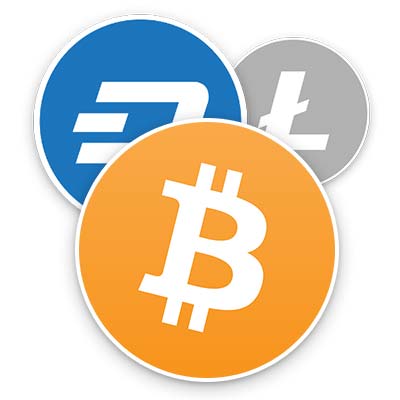
Cryptocurrencies
While Bitcoin was one of the first currencies to hit the global network, it certainly isn’t the only one. Most of the digital currencies out there use some of the code found in Bitcoin, and nearly all of them use the blockchain. It’s simply too good of an invention not to take advantage of. But each currency has something unique to offer to its users. Some try to focus on even greater security, while others prioritize transfer speeds. No matter what your priorities are, we are certain there is a cryptocurrency out there for you. Let’s take a look at some of the major cryptocurrencies out there and see what they have to offer.

Litecoin
This cryptocurrency is one of the first ones to hit the market after the launch of Bitcoin. Technically, it is nearly identical to Bitcoin, but with one major difference. Instead of using SHA-256d as its hash algorithm, Litecoin uses Scrypt, created by Colin Percival and designed to make it extremely expensive to initiate large scale hardware attacks because of the amount of memory that is needed to decrypt a single key. Litecoin was released in 2011 and was founded by Charles Lee.

Namecoin
Also released in 2011 and very similar to Bitcoin, this cryptocurrency uses SHA-256d for its hash algorithm. The main difference between Bitcoin and Namecoin is the ability to store date within its own blockchain transaction database. This does propose a challenge when all the transactions are scaled; to solve this issue Namecoin uses a shared proof-of-work system. Namecoin can also act as a decentralized DNS. It was created by Vincent Durham.

Peercoin
Peercoin is another cryptocurrency which uses SHA-256d as its hash algorithm. Created around 2012, this cryptocurrency is one of the first to use both proof-of-work and proof-of-stake systems. The inventor of Peercoin, known as Sunny King, saw a flaw in the proof-of-work system because the rewards for mining are designed to decline over time. This reduction in rewards increases the risk of creating a monopoly when fewer miners are incentivized to continue mining or start mining, thus making the network vulnerable to a 51% share attack. The proof-of-stake system generates new coin depending on the existing wealth of each user, so if you control 1% of the Peercoin currency, each proof-of-stake block will generate an additional 1% of all proof-of-stake blocks. Incorporating a POS system makes it significantly more expensive to try and attain a monopoly over the currency.

Dogecoin
This cryptocurrency was initially created as a joke on December 8th, 2013. However, the meme based currency quickly generated a community and reached a value of $60 million USD by January 2014. Today, this currency is worth nearly $440 million USD. Although there aren’t many mainstream applications designed to use Dogecoin as a method of payment, many online users have been using this form of digital currency as a way to tip others for their creative content or services. Dogecoin is very popular amongst the social media networks. With the help of crowdfunding, the community managed to schedule a delivery of a gold coin which represents the official currency to reach the Moon’s surface by 2019. Created by Jackson Palmer and Billy Markus, Dogecoin uses Scrypt as a hash algorithm alongside a POW system to solidify all transactions.

Auroracoin
This form was an attempt at creating a decentralized digital currency system to replace the heavily restricted Icelandic currency known as krona. The use of Bitcoin in Iceland is also very restricted. This is part of the reason why Baldur Odinsson, a pseudonym of an unknown entity, created Auroracoin. This coin was launched in 2014 and uses Scrypt as a hash algorithm and POW for transaction authentication. The creator of Auroracoin attempted to boost the knowledge of Auroracoin amongst the general public and increase its network effect by distributing 50% of all generated Auroracoins to the population of Iceland. This action was dubbed the “airdrop.” The airdrop was delivered in three phases, after each phase the value of Auroracoin was drastically decreased and after the final stage all remaining Aurora coins were burned by sending them to a non-existing address labeled “AURburnAURburnAURburnAURburn7eS4Rf.” Since April of 2015 and the previous destruction of pre-mined Auroracoin, the value of each coin has stabilized and has been on the rise.

Dash
This is another open source cryptocurrency which introduces something new into the crypto world: instant transactions. Originally introduced to the cryptocurrency market as Darkcoin, this currency was renamed Dash on March 25th, 2015. Unlike other currencies, Dash uses X11 as a chain hashing algorithm for its proof-of-work system. It was one of the currencies which started with a set of pre-mined coins, estimated to be about 1.9 million coins which are equal to about a quarter of the current Dash coin supply. The developer of Dash faced his fair share of issues when working with Dash, one of which was known as an “instamine” error. After resolving the problem, the developer suggested a re-launch of the cryptocurrency but the community strongly insisted on leaving everything as it is and progressing with the development of the currency. At one point, Evan Duffield, the lead developer and creator of Dash, suggested that an airdrop of Dash was needed to broaden the initial distribution of the coin. This was also overwhelmingly rejected by the community. The Dash community is one of the most active around the cryptocurrency side of the internet, and the current capitalization of Dash is over $500 million USD.
As you can see, there are many different cryptocurrencies out there and each one of them offers something different. They were all created with certain criteria or functionality in mind, and many more developers continue generating new and improved functions amongst the existing cryptocurrencies, as well as generating new ones to satisfying the ever demanding users.

ICOs, Investments, and Profits
Before we can start talking about investing into cryptocurrencies and possibly making some profit along the way, we need to discus ICOs, not to be confused with IPOs.
Let’s get to the point, what in the world is an ICO? An Initial Coin Offering is a transaction type designed to help spur up and launch new cryptocurrencies and give them some traction. Essentially, it is a fundraising tool designed to boost the newly born currency into the online world. The idea is that you invest currently launched cryptocurrencies into the new currency you are favoring in an exchange for future cryptocoins of the freshly launched or to be launched currency. It’s somewhat simple: you give the launchers some Bitcoin or Ethereum and you get some of their future Unicorncoin, assuming those don’t exist yet.
In the fiat currency world, most financial institutions see these ICO transactions as “unregulated” investments of cryptocurrencies where users can make Bitcoin or other digital currencies. The key word here is unregulated. Unlike share or traditional IPOs, ICO coins, the representation of your investment into a certain digital currency startup, aren’t linked to any ownership rights and thus can be trade or exchanged at will. In the fiat world, this is a huge no-no.
So, let’s put everything on the table. ICOs are essentially coins which you get by supplying someone with currently successful crypto coins so that they have a chance to make new future proof and even more successful coins. It seems silly, but somehow these ICO transactions are actually making a huge buzz in the cryptocurrency world. It is estimated that nearly $240 million has already been invested into such ICOs, of which about $110 million was invested this year. Surely there is a reason for such a huge movement of money? We think that people are constantly searching for that new and shiny cryptocurrency that will inevitably become the world currency system, and perhaps this is the reason why investments into this research are so high. Some of you might say that the potential is already there via Bitcoin or some other already released currency, but the reality is that not everyone is on the same page. Those of us who are so called non-conformists might be looking for something special in other places.
Here is the problem with ICOs
As long as you paint a pretty picture and throw in enough cryptocurrency jargon at an unsuspecting investor, you are able to get away with keeping all the investments which were given to you to start the somewhat fictional currency and never be heard from again. Since anonymity is relatively easy to attain online and that’s exactly what most cryptocurrencies are about, accepting that 1 BTC payment request and never hearing from your so called “genius” developer is a very sound and scary possibility. Our suggestion is to be diligent and careful with your ventures. Double check everything, including dates, claims, and domain registration dates. If something seems odd or misaligned, run like you have never run before. With all this in mind, don’t assume all of these potential goldmines are deadly web traps. Many of these developers are actually looking for legitimate funding and they are in fact trying to make the new invention a success. Who knows, maybe you will find the diamond in the rough.
What about regulations and laws?
Isn’t there something out there in place to protect my potentially fake investment? Truth be told, you are sort of out of luck. You see, most of these ICO coin tokens are designed in a way that marks them as ‘software presale tokens.’ So essentially, your ICO coins are no different than a video game token that you bought before it launched. The main reason many developers choose to address their new currency in such a way is to avoid paying all the expenses that come alongside legal sales. In a similar matter, a developer of a newfound cryptocurrency might choose to say that his or her investors are ‘donating’ coins to their cause and what not. So while this is completely acceptable and falls under the same reasoning for why Bitcoin was invented in the first place, to decentralize and stop all the crazy fees that go into making these investments happen, it’s still relatively questionable.
If it is so risky to invest through the use of ICOs, then why is on the rise and why are so many people trying to make a profit this way? Many predict that the boom in ICO sales is primarily due to the huge amount of return that was made by the early Ethereum adopters, making ICOs seem pretty desirable.
So is everyone chasing a golden egg laying goose and getting scammed along the way? Not really. There is great potential for making some serious profit when investing with ICOs, but the lack of regulation and security is what we are worried about. Just because the system works doesn’t mean it is working the right way. Yes, in a certain alternative way ICOs are exactly what the whole cryptocurrency world is all about, but security is something that all cryptocurrencies focus on as well. We don’t see this same concept being implemented with ICOs.
The question remains, should you buy ICOs in an attempt to make profit? If you have an insane appetite for risk and aren’t afraid to lose any of your investing capital, then go ahead, you might come out on top. But when you take all the factors into account and think about the security aspect, or the lack thereof, then maybe you should put your money into someone else’s pocket for the time being, while ICO security is improved.

Selling, Buying, and Trading
First things first, buying and selling Bitcoin isn’t even remotely close to being the same as using the stock exchange to purchase or sell stocks. On the same note, it isn’t anything like FOREX and should never be considered the same thing.
Secondly, the factors involved with trading Bitcoin are completely different than those on a traditional exchange network. Fees, regulations, limitations…every single one of these points are completely different from using any other fiat currency or stock exchange system. Furthermore, all of these points have to be taken into account when deciding how much to buy or sell or when to buy or sell. Then there are the different ways you can purchase Bitcoin or other cryptocurrencies, and the multiple different ways you can sell that same currency. The only resemblance between fait currency exchange and cryptocurrency exchange is that just like choosing which software to use for trading stocks and fiat currencies, you will have to choose a cryptocurrency exchange platform.
If there isn’t a centralized exchange system or limitations and regulations fluctuate from one platform to another, then why would you choose to trade cryptocurrencies? One of the key reasons why people choose to trade Bitcoin over other currencies is due to its availability on the global scale. There is no timeframe during which Bitcoin can be traded, the market never closes and is always open to trading. Weekends don’t exist for Bitcoin, so you can trade any time of the day, during any day. Whatever is most convenient for you, wherever is most convenient for you, Bitcoin will be there for you to trade.
Another reason many choose Bitcoin over traditional stocks and fiat currencies is because of its fantastic volatility. To a long term investor, volatility might be a bad idea and promotes instability. However, day to day traders can benefit enormously with the amount of volatility which is seen in Bitcoin every day. We are all aware of the reason for this volatility as well, as all new currencies experience it. This is especially true when knowledge of the currency is low alongside the relatively low network effect. But this doesn’t mean the currency is bound to fail, and all it means is that Bitcoin needs more time to mature. For a day to day trader, those are golden words.
Something else that many have turned to Bitcoin because of is the ability to trade it with leverage. Certain platforms will give you leverage over your initial desired trading amount. For example, BitMEX offers up to 100x leverage for your trades. This means your investment of $20 can be leveraged as high as $2000. Keeping in mind that most of these platforms will have regulations and rules in place to protect their investment; it is still a somewhat heavenly environment for a trader when combining these leverages with the high volatility that Bitcoin goes through each day.
One of the most sought after reasons why so many traders are turning to Bitcoin is the fact that it’s a completely new median and is in most cases independent of the FOREX and other exchange systems. Furthermore, this currency also moves on a global scale, so it is somewhat isolated from localized risk. Events that impact the fluctuation of Bitcoin prices are usually easily traced and often predictable as long as common sense and some knowledge of economics are used. Those of who are first starting to trade Bitcoin won’t have to sift through enormous amounts of data to carefully analyze price movements of Bitcoin, in most cases you can see clear relationship between events related to Bitcoin and its value.
So what is the best way to trade Bitcoin?
Luckily, we have this wonderful and somewhat magical concept known as Contracts For Differences. All CFDs represent a contract between the trader and the exchange that is accepting or proposing the contract. It dictates that the difference between entry price and the exit price of each trade is in turn equal to the profit that the trader will make. Essentially, it’s both parties agreeing to simulate the use of actual assets. This allows the trader to use an exchange of choice for Bitcoin trading without actually owning any Bitcoin. CFDs offer flexibility, no matter if you are interested in going long or short term. The best part is that they can be entered into the exchange at any time on any day and be closed whenever you wish.
Generally, the fees related with trading through CFDs are usually very low when compared to other market trading methods. However, they are higher than if you were to trade direct Bitcoin instead of CFDs. Additionally, it is vital to understand that CFDs are perfectly suitable for a short term trader but are not a good choice for those seeking to make long term investments, because of the daily premium of 0.1% that most charge for using CFDs. Then there is the all-time hated “margin call.” This is a system put in place to prevent the client balances from going deep into negatives. Since Bitcoin offers high volatility and most exchanges give you high leverage, the possibility of negative balances is a real risk and a threat to the exchange. Lastly, CFDs require regulations and regulations come with fees. This is exactly why many Bitcoin exchanges choose to operate outside of the US, where these fees are astronomical.
If CFDs aren’t what you are looking for and you are more interested in a long term investment, then buying and holding onto your Bitcoin is probably a better choice for you. There are plenty of platforms which offer free wallets to hold your Bitcoin once a purchase is made. Generally, most platforms will let you use your Debit Card, Credit Card, Bank Account (this often takes a few days per transaction), and even PayPal. You will need to register on the platform of your choice, open and account, and fund it with one of the above options. From that point on you can make a purchase for the desired amount of BTC you wish as long as your account balance permits it.
Most of these platforms will also allow you to sell BTC back to customers who are looking to buy them. The concept is the same: find a buyer, sell your BTC, and withdraw your profits.
The beautiful part about trading Bitcoin is that there are limited rules and regulations set regarding cryptocurrencies around the world. This means that you aren’t limited by your government with your transactions. However, some countries have very strict rules when it comes to trading cryptocurrencies, such as Russia. If you reside in one of these countries make sure that you are operating within you legal parameters.
Final Words On CryptoCurrency
Bitcoin and many other cryptocurrencies are opening the doors to a new type of digital money, which we think has the potential to someday become a leading currency of the world. At the moment, even the oldest of cryptocurrencies are still maturing and only time will tell where this genius invention is heading. From what we can tell, there is plenty room for advancement. At the same time, Bitcoin has already revolutionized the digital world.
Inside Look At The Top 70 Alternative Cryptocurrencies & Token Projects
Many cryptocurrency experts argue that we are currently experiencing a bull market that is benefiting from a high amount of optimism about the future of cryptocurrencies and the potential applications of decentralized assets. The volatile nature of the cryptocurrencyecosystem, however, means that it’s likely we’ll experience more highs and lows in the months and years to come.
The vast amount of different altcoins and tokens that flood the cryptocurrency market today make it virtually impossible to give each option the time it deserves. In order to properly assess a cryptocurrency, it’s necessary to perform an analysis that incorporates all of the information currently available about it, along with a range of different fundamental and technical factors.
A fast way to sort through the long list of altcoins on the market today is by researching only the tokens that you deem worthy. In order to assess whether a cryptocurrency warrants further investigation, the primary question to ask is “what problem does it solve?”.
Using this method, we’ll take a look at the top 70 altcoins as listed by marketcap and briefly summarize the issues that they are attempting to provide a solution to.
Bitcoin

Bitcoin is the largest and most successful cryptocurrency in the world, and aims to solve a large-scale problem- the world economy is to interconnected, and, over the long term, is unstable. Functioning as a long-term investment mechanism that is completely separate from fiat based systems, Bitcoin is a disconnected USD hedge that is becoming increasingly more effective in providing a solution to its target problem.
Ethereum

Ethereum attempts to redress three important issues over the short, medium, and long term. The short term goal of Ethereum is to create a platform through which ICO tokens can be issued and distribute them with smart contract. The medium term goals of Ethereum aim to provide an alternative to unwieldy and inefficient legal contracts. Finally, the long-term applications of Ethereum involve the management and regulation of complex AI systems.
Ripple

Ripple aims to streamline and optimized the convoluted banking system. The current banking system as it exists today is spread across thousands of different disjointed ledger systems around the world. This system forces market makers to park immense amounts or reserve capital in order to facilitate payments, whereas if they were all on the same ledger system they wouldn’t have to. Ripple is focused on connecting all payment systems on the one ledger, providing banks with a secure blockchain system.
Litecoin

Litecoin was originally created to complement Bitcoin with a specialized focus on concentrated mining pools and speeding up transaction timings. Unlike Bitcoin, which functions as a secure form of holding and storing wealth, Litecoin is intended to revolutionize the process of transferring monetary value.
Ethereum Classic

Ethereum classic holds to the adage that “code is law”, stating that Ethereum should not modify the network in order to facilitate the refund of losses to individuals who create faulty code. Ethereum Classic is immutable, and unless explicitly defined within contract codes, does not allow for reversals, undos, or opt-outs.
NEM

NEM focuses on the creation of tools and applications that leverage the functionality of decentralized coins. To the creators of NEM, simply creating a decentralized currency is not enough- it’s also essential to provide third-party developers with simple APIs that are 100% secure.
IOTA
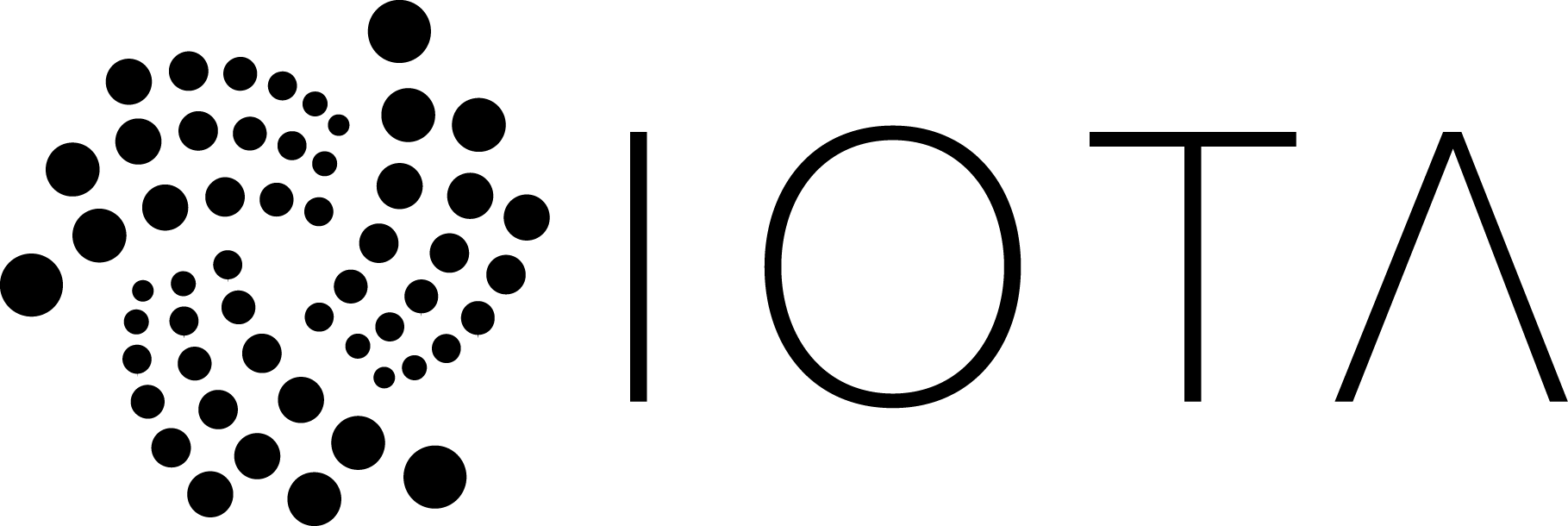
IOTA is a highly innovative distributed ledger technology platform that aims to function as the backbone of the Internet of Things. As a fairly derivative extension of blockchain technology, IOTA has no mining, no blocks, no transaction fees, and no difficulty. Instead, it aims to operate as a settlement layer that facilitates communication between disparate existing systems.
Dash

Dash has worked heavily toward solving some of the most common issues with Bitcoin, such as slow transactions, delivering enhanced financial privacy, and developing a decentralized governance system. Dash also focuses on enhancing the consumer friendliness of digital currency, and aims to create a built-in process that facilitates the development and marketing of consumer friendly goods and services.
Bitshares

The creators of Bitshares have created their solution to optimize asset trading. Currently, assets are traded on inefficient privatized platforms. From the perspective of Bitshares, assets should trade on one single ledger. Platforms such as Ethereum are too slow to handle extensive ICO capital fundraising, so a faster platform, such as Bitshares, is needed.
The Bitshares platform was originally designed to create digital assets that could be used to track assets such as gold and silver, but has grown into a decentralized exchange that offers users the ability to issue new assets on.
Stratis

Stratis aims to make the blockchain more accessible to companies by delivering straightforward, simple integration with Microsoft’s .Net platform and it’s C# language. As a business-focused blockchain tech platform, Stratis has the ability to hook into business software in an elegant and simple manner.
Monero

Bitcoin is definitely a highly innovative way to transfer and hold monetary value, but it does allow anybody with access to your public address to see the funds that it stores. With Monero, however, the funds holders own are not associated with their public address, providing users with complete anonymity.
Zcash

Like Monero, Zcash offers complete transaction anonymity, but also pioneers the use of “zero-knowledge proofs”, which allow for fully encrypted transactions to be confirmed as valid. This unique property enables the creation of entirely new classes of blockchain applications.
Waves

Initial coin offerings, or ICOs, are typically slow when launched on platforms such as Ethereum. Waves allows startups to launch their own ICOs in a matter of minutes on a faster, simpler, decentralized exchange with minimal fuss.
Golem

Golem claims to be building the world’s first global, open sourced decentralized supercomputer, accessible to everybody. By combining unused processing power sourced from everything to personal laptops to entire datacenters, Golem promises to provide users with the ability to make money by “renting” out the computing power of their hardware. While the Golem project is certainly hopeful, it’s still in early alpha stages.
Bytecoin

Bytecoin is another cryptocurrency that aims to completely anonymize the transfer process, but provides the added benefit of customizable anonymity levels with regards to the financial details of a wallet.
Steem

Steem is a unique social networking that aims to provide content creators with reward in the form of cryptocurrency. Steemit, the website that drives steem, provides currency to content creators in the form of the eponymous steem tokens, which can then be traded on the crypto market.
Siacoin
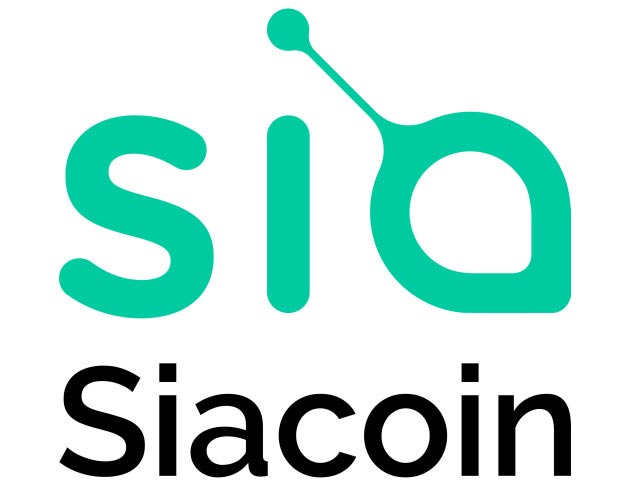
Siacoin aims to address the problems presented by centralized computing and storage systems. These solutions are typically expensive and cumbersome- the Siacoin platform is dedicated to providing an end to end encrypted decentralized cloud.
Iconomi
![]()
There are many different altcoins that investors may want to diversify into, but identifying, investing in, and securing so many different assets is time consuming and difficult. Iconomi provides tokens that derive dividends in ETH form Iconomi, which functions as an index fund for digital assets.
BitConnect

BitConnect is a high-ranking crypto that promises to deliver a “self-regulated financial system”, functioning as an all-in-one Bitcoin and crypto community platform. BitConnect is currently a hot topic of debate amongst members of the crypto community, with many claiming that it is a “scam”. The BitConnect platform bears a striking resemblance to high yield investment programs, or HYIP, so exercise caution if choosing to invest.
Dogecoin

Dogecoin is one of the earlier “joke” digital currencies, but due to the actions of an enthusiastic community, has expanded into more serious endeavours, even funding several charitable ventures in the developing world.
Stellar Lumens

Stellar Lumens, like Ripple, aims to optimize the unwieldy banking system, but focuses more on the underbanked. Functioning as a derivative of Ripple, Stellar Lumens intends to connect payments, banks, and the underbanked while lowering banking costs.
Lisk

Lisk is a new platform that intends to lower the difficulty of creating new blockchain applications. Lisk functions as a sidechain platform that provides users with the ability to easily create new applications and products.
Augur
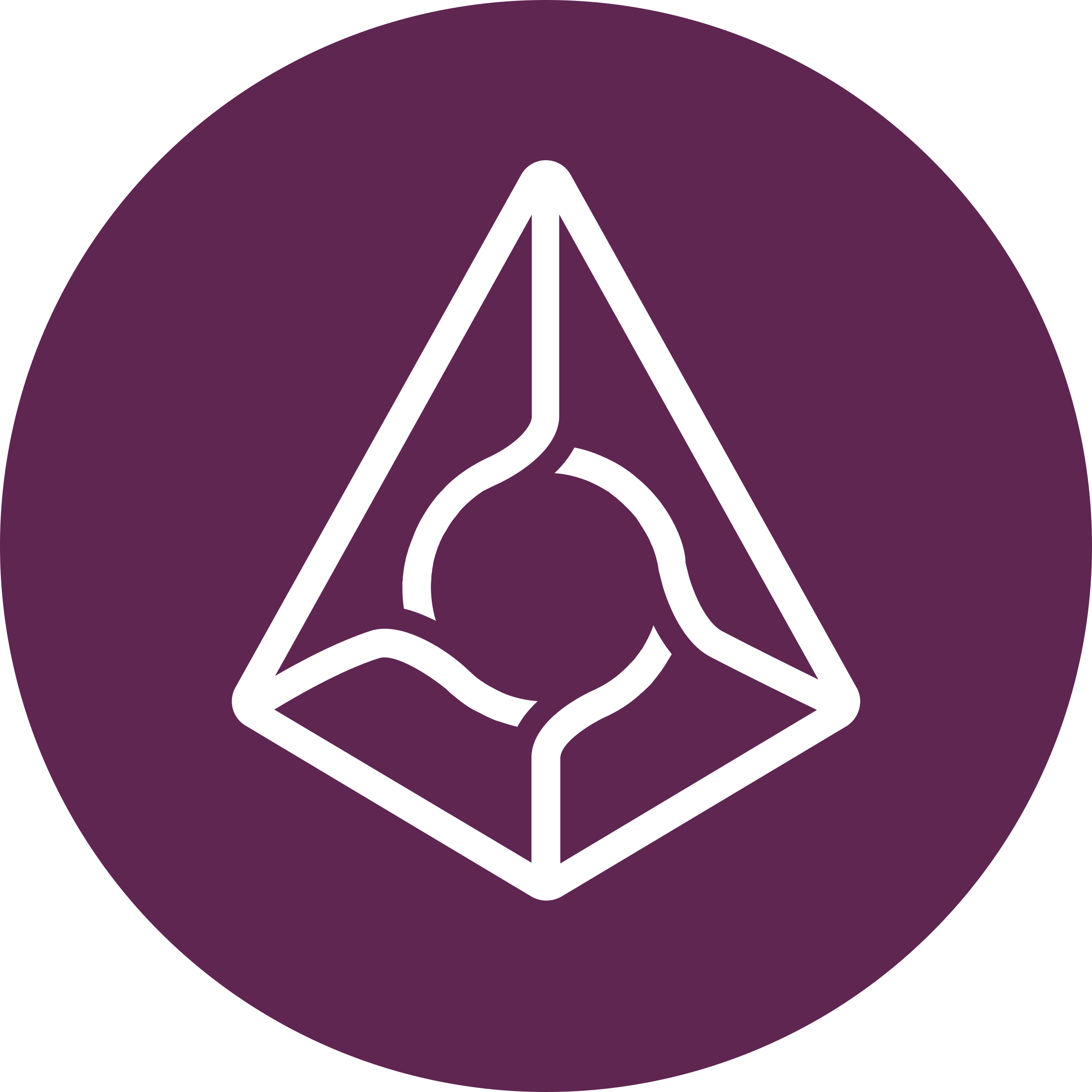
Augur is a new and unique take on betting platforms. Traditional centralized betting platforms are open to manipulation, not to mention expensive and centralized. The Augur platform functions as a decentralized prediction market, and allows for real-money betting on outcomes.
AntShares

AntShares is commonly referred to as “China’s Ethereum”, and aims to address the same issues as the Ethereum platform. Antshares is currently rebranding as Neo.
Ardor

Ardor, like Lisk, is a sidechain platform, but refers to sidechains as “Child Chains”. Essentially, Ardor aims to streamline the process of creating applications on the blockchain.
GameCredits

In the same way that Bitcoin aims to revolutionize real-world money, GameCredits aims to revolutionize game currency. GameCredits wants all games to use the same currency, and make this currency transferable between all games.
Factom

Factom applies cryptocurrency encryption techniques to the storage of critical items. By functioning as a decentralized storage provider, Factom focuses on creating an audit trial for digital documents that deliver undisputable evidence.
Gnosis

LIke Ardor, Gnosis aims to provide gamblers with an alternative to easily-manipulated centralized betting platforms.
MaidSafeCoin

MaidSafeCoin is similar to Factom, providing for the storage of critical items on a decentralized blockchain ledger.
Decred

The issue that Decred aims to solve is the difficulty involved in solving the problems that face Bitcoin. From the perspective of the creators of Decred, governance should be built into the platform. Decred functions as a solution to these governance issues.
Nxt
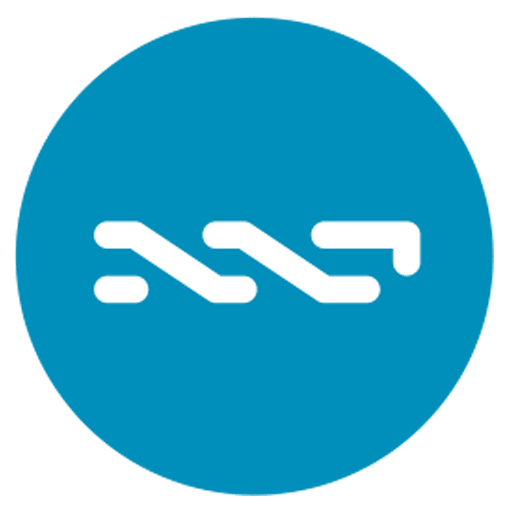
Nxt is yet another tool that can be used to create new blockchains, fostering innovation in the blockchain ecosystem.
Komodo

Komodo aims to increased privacy and security levels in transactions on the blockchain, and also provides users with the ability to create more anonymous, privatized blockchain apps and smart contracts.
DigiByte

DigiByte functions as a transparent global ledger that is intended to address the growing issue of international cybersecurity, focusing on security-based blockchain applications.
Byteball
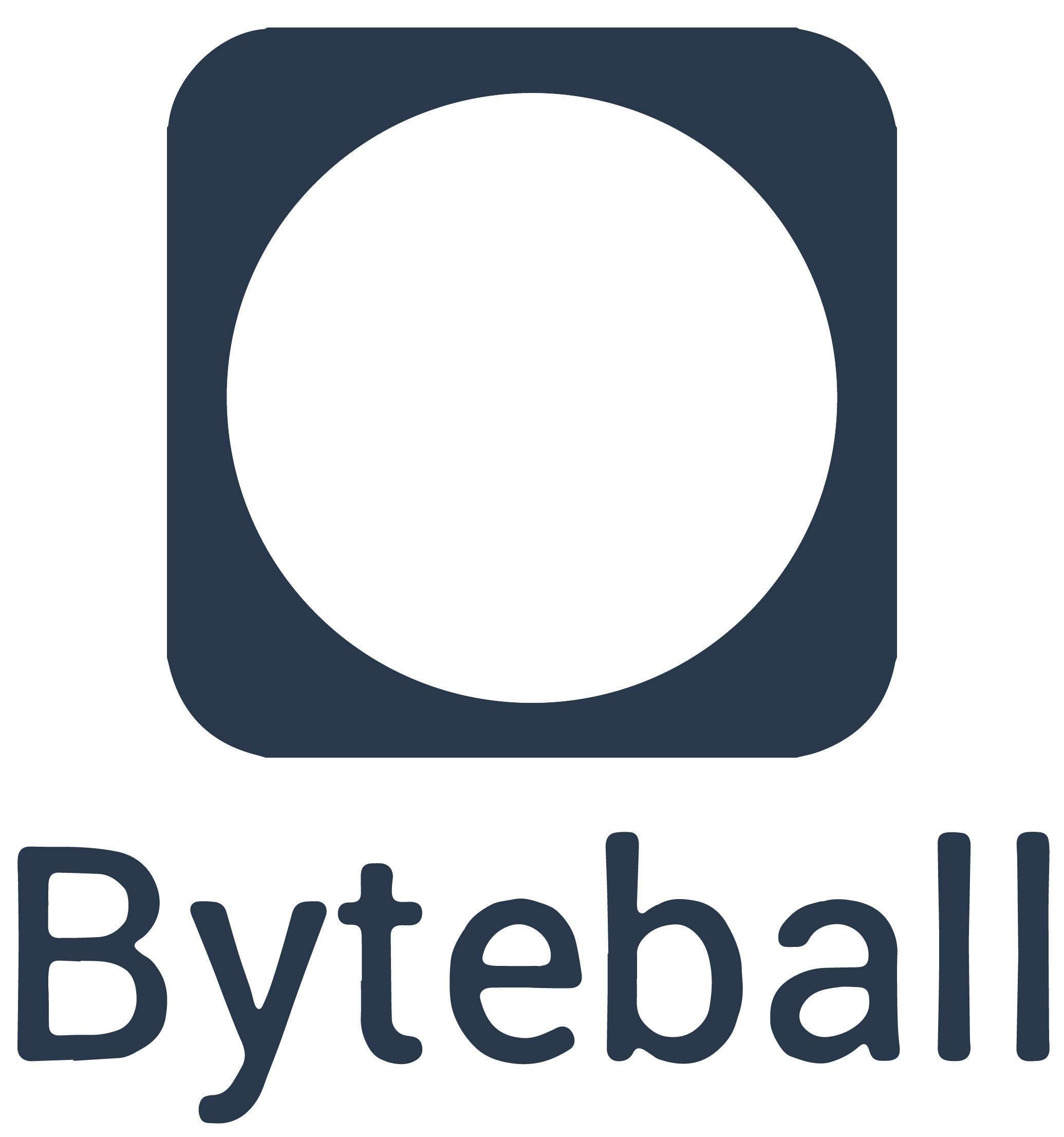
Mobile devices and chat platforms are used to operate millions upon millions of transactions. Byteball is intended to provide chat bots that facilitate smart contracts and payments on these platforms.
DigixDAO

DigixDAO addresses the trust issues presented by purchasing custodial gold. DigixDAO attempts to correct this issue by incorporating blockchain technology.
Basic Attention Token
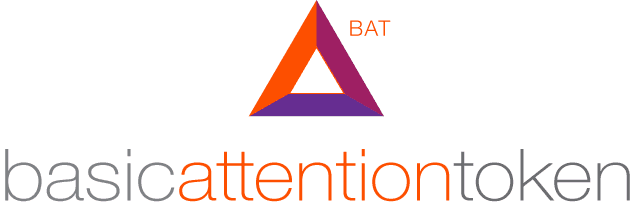
The advertising industry is plagued by fraud. Most players in the advertising industry generate no profit, apart from ad publishers themselves. The Basic Attention Token not only transforms the way the advertising industry works, but also provides users with the ability to profit from time spend watching ads.
Veritaseum

Veritaseum functions in essentially the same manner as Bitcoin, which makes it somewhat difficult to assess its value proposition. According to the Veritaseum website, the platform eliminates middlemen, gives currency holders full control at all times, and eliminates the need for trust between parties- all of which are provided by Bitcoin already. Assess carefully before investing.
FirstBlood

The FirstBlood platform aims to optimize the static, centralized eSports world.
MobileGo

In a similar manner to GameCredits, MobileGo aims to centralize mobile app platforms and reward developers.
Tether

Tether is a relatively innovative cryptocurrency that is intended to function as a decentralized iteration of both USD and EUR in order to facilitate faster cryptocurrency trading.
Numeraire
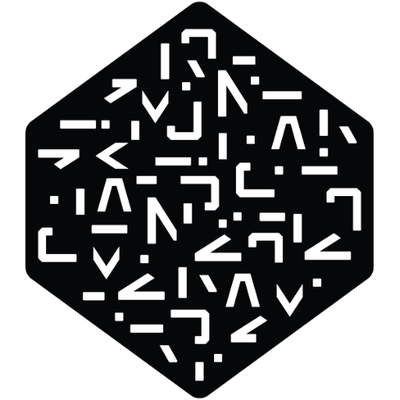
Machine learning hedge funds have made a significant amount of progress in the stock market. The Numeraire solution is a decentralized effort that is designed to provide better outcomes by leveraging anonymized data sets.
SingularDTV

Marketing and selling content in the creative industry can be difficult, especially in the online environment. The SingularDTV solution provides artists and individuals living in the creative industry with the ability to directly deliver their content in a P2P marketplace.
SysCoin
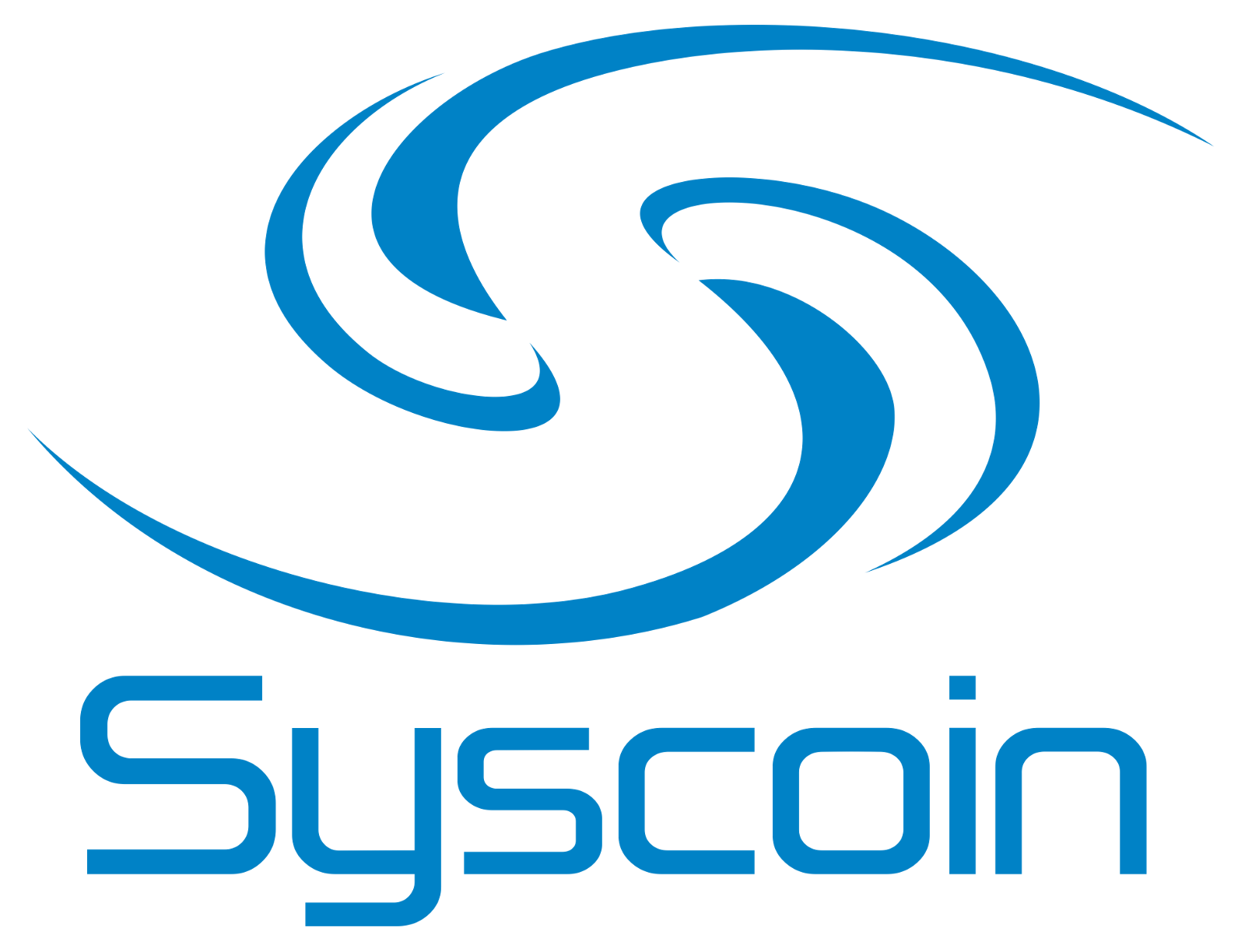
SysCoin is another platform that is designed to provide users with the ability to create more blockchain apps, delivering a decentralized marketplace.
BitcoinDark
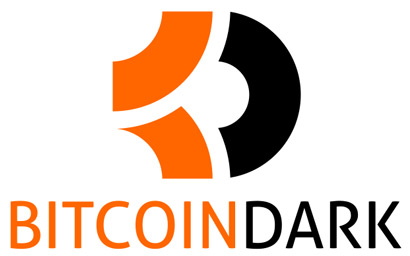
BitcoinDark is a cryptocurrency that focuses on fulfilling the primary axioms of the blockchain. The BitcoinDark platform has recently rebranded to Komodo.
PIVX
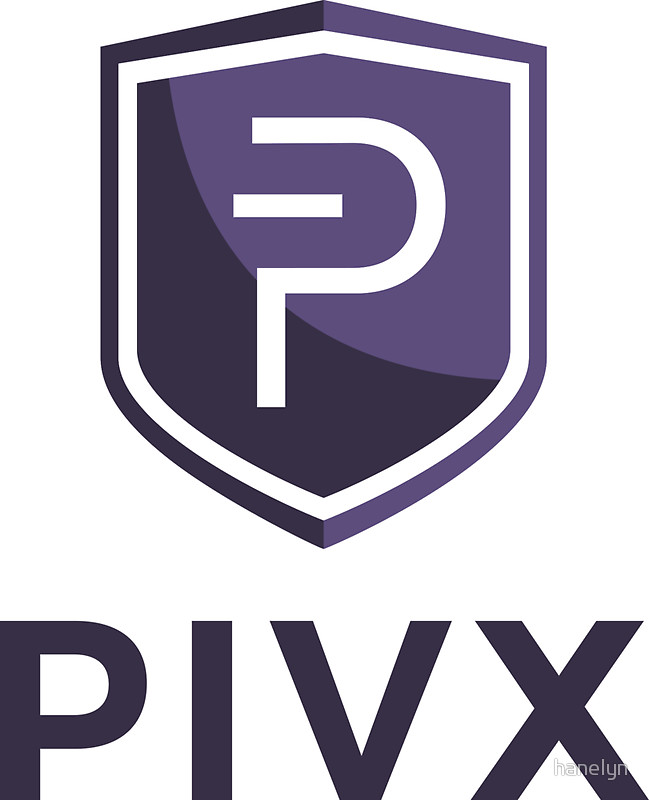
Pivx aims to solve the issues of anonymity in the blockchain, and aims to completely obfuscate financial data in all aspects.
Aragon

Aragon intends to centralize company registration by registering on a decentralized ledger that incorporates a built in court system.
MCAP

MCAP provides cryptocurrency investors with the ability to invest in multiple altcoins at once in a streamlined fashion, as well as delivering cloud mining services.
Emercoin
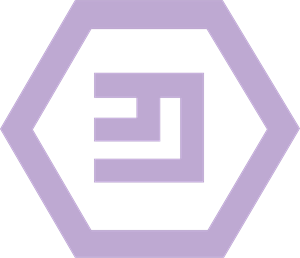
Emercoin maintains the idea that blockchain platforms should constantly be evolving, and deliver a continuous stream of new features through which transactions can occur for as many users as possible. The Emercoin platform incorporates many different functions, including innovative applications such as a decentralized torrent tracker.
Ubiq

Ubiq attempts to redress a number of issues with the smart contract platforms that are currently available, such as Ethereum.
Peercoin

Peercoin is built around the concept that proof of work systems are unstable over the long term, and that proof of stake systems are built to last.
Peerplays

Peerplays is yet another decentralized betting platform that aims to eliminate the risk of manipulation that centralized platforms are susceptible to.
Ark
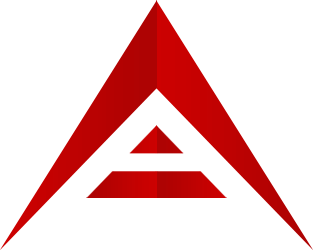
Ark is designed to streamline and optimize the creation of new blockchains, responding to the consumer need for interconnected blockchains.
Lykke

Lykke intends to address the difficulty experienced by traders attempting to both hold currencies and trade them on one screen. Lykke delivers a multi-asset trading application and exchange.
Round

Round represents a concerted effort to decentralize inefficient eSports platforms.
Storjcoin X

Storjcoin X is an end-to-end decentralized private cloud that intends to deliver an alternative to expensive centralized solutions.
Reddcoin

Cryptocurrency is experiencing widespread adoption worldwide, but has yet to hit the social media ecosystem. Reddcoin intends to provide social media users with the ability to transmit currency on social media platforms.
iExec RLC

iExec, like Storjcoin X, is intended to provide individuals in need of low-cost cloud storage with a decentralized solution.
Asch

Asch is a Chinese blockchain solution that provides users with the ability to create sidechains and blockchain applications with a streamlined interface.
Melon

Melon is a decentralized fund management platform that provides consumers with the ability to easily invest in digital assets.
Wings

Creating decentralized autonomous organizations is a difficult process. Wings aims to provide users with a platform that streamlines the creation of DAOs and ICOs.
Quantum-Resistant Ledger

It’s possible that the future applications of quantum technology will create solutions that can threaten the security of cryptocurrencies. The Quantum Resistance Ledger aims to create a solution that is not susceptible to quantum attacks.
Nexus

Nexus is an incredibly ambitious project that aims to distribute blockchain solutions via cube satellites in orbit.
Edgeless

Edgeless is yet another decentralized betting platform.
Namecoin

Domain names are an essential part of creating a website. As they are hosted by centralized platforms, they are susceptible to censorship. Namecoin is a blockchain-based domain solution that eliminates this issue.
Counterparty

Bitcoin is a powerful cryptocurrency, but is limited in the amount of assets that can be issued on top of it. Counterparty aims to provide users with the ability to issue assets and smart contracts on top of cryptocurrency.
Synereo

Synereo resembles Steemit in that it provides content creators to receive remittance for their work with a decentralized peer-to-peer currency.
Verge
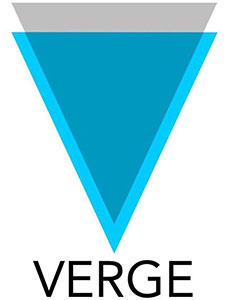
Verge is another digital currency that aims to completely anonymize the payment process.
Omni

Omni is another platform that is designed to provide asset issuance on top of cryptocurrency.
PRX

PRX, or Printerium, aims to apply blockchain technology to the 3D printing industry.
Many of the Altcoins listed above have progressed in their development since this post in 2019, and some of them have regressed.
We will be doing an update very soon, so stay posted.
CRYPTO FREEDOM
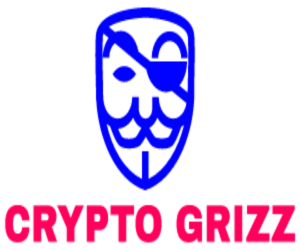
VISIT OUR OTHER SITES:
Check Out Our Crypto Privacy Site: CryptoGrizz.com
Check Out Our Global Crypto Privacy Site: GlobalCryptoPrivacy.com
Check Out Our Global Crypto Freedom Site:GlobalCryptoFreedom.org
Check Out Our Crypto Trading Site: CryptoGrizzTrader.com
Check Out Our Low Cap Altcoin Site: CryptoGrizzAltcoins.com
Check Out Our Prepper Site: PrepperGrizz.com
Check Out Our Prepper Survival Site: PrepperSurvival.org
Check Out Our Global Crypto Survival Site: GlobalCryptoSurvival.com
Check Out Our Precious Metals Investment Guide: PreciousMetalsInvestmentGuide.org